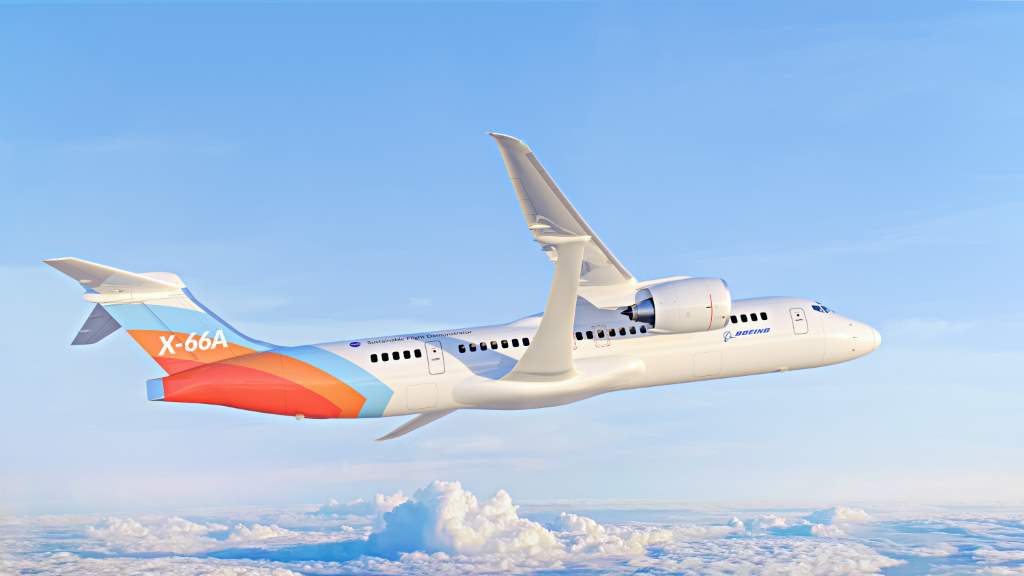Boeing has ferried an MD-90 aircraft to the site where it will be modified to test the Transonic Truss-Braced Wing (TTBW) configuration as part of NASA’s Sustainable Flight Demonstrator project.
As Boeing, NASA and community leaders have gathered at the company’s facility to recognise the milestone in development of the experimental X-66A aircraft, Boeing has released photos of the jet’s journey from Victorville, California, to Palmdale.
The X-66A is NASA’s first experimental plane focused on helping the US achieve its goal of net-zero aviation greenhouse gas emissions. Modification will begin soon and ground and flight testing is expected to begin in 2028.

“This marks an important step in the Sustainable Flight Demonstrator project, advances Boeing’s commitment to sustainability and brings us closer to testing and validating the TTBW design,” said Boeing chief technology officer, Todd Citron.
With ultrathin wings braced by struts with larger spans and higher-aspect ratios, the TTBW design and other expected technological advances could lead to reductions in fuel use and emissions by up to 30%. Boeing and NASA have collaborated for more than a decade on the concept through the Subsonic Ultra Green Aircraft Research (SUGAR) Program.
“We at NASA are excited to be working with Boeing on the X-66A Sustainable Flight Demonstrator making critical contributions to accelerate aviation towards its 2050 net-zero greenhouse gas emission goal,” said Ed Waggoner, deputy associate administrator for programs in the NASA Aeronautics Research Mission Directorate.
www.boeing.com
Credit: Source link
